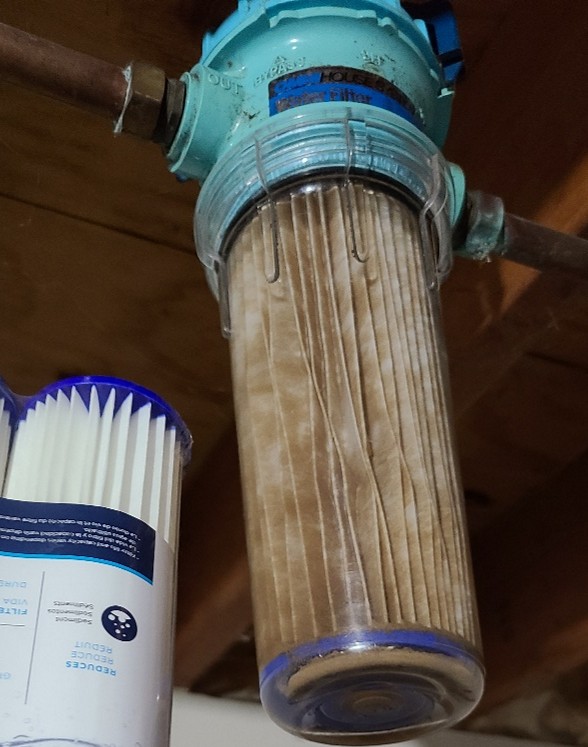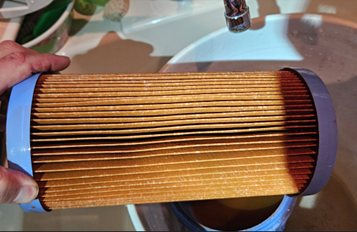Are you currently looking for a home to purchase?
For some potential homebuyers, knowing where their water comes from may not be the highest priority in their search, but it can certainly become a significant and costly issue after a purchase. Owning a home with a private well comes with advantages and disadvantages. The main advantage is that you own the well and are in control of your water. From a different perspective, the main disadvantage is that you own the well and are in control of your water. Although well water does not come with the price tag of water obtained from a public water utility, it requires its own investment; It costs money and time to ensure that the well and all of its components stay in good working order and that the water is of good quality, which is something many people overlook when budgeting for their future home.
What is the water source, a private well or municipal water?
If you are on a private well, you as the owner are responsible for well repairs and treatment (if necessary) of your water. If the property has a joint well, you will be sharing the well with at least one other neighbor (in some cases, multiple properties). This can create difficulties when testing, treating, and making repairs to the well because you may need to access someone else’s property as well as negotiate cost sharing.
If you are supplied by a municipality, your responsibilities start at the curb and continue into your home. This includes the service line which connects the home to the distribution system. Look into what the service line is made from (PVC, lead, galvanized, copper, etc). If the property still has a lead service line, you may need to pay for the replacement of it unless your municipality has a Lead Service Line (LSL) Replacement program. To learn more about LSL replacement and funding in Wisconsin, please follow this link: https://dnr.wisconsin.gov/aid/documents/EIF/leadServiceLineFunding.html
How can I find out more about a private well?
If the property is in Wisconsin, we highly recommend searching for the well’s construction log using the Private Well Database. You can find the well either by typing in the address or searching on the map. A helpful feature of the link below is turning on the “County Parcels” layer to see property ownership records. This can also indicate whether the property has other abandoned wells and potential reasons why prior owners may have drilled new wells.
https://dnrmaps.wi.gov/H5/?viewer=Well_Driller_Viewer
What things should I look for during a home walk through?
At a site viewing of the property, look for the well head. If the well was constructed after 1991, it must be at least 12 inches above grade. It should be visible, or some homeowners try to hide it; whether it is under a fake rock, disguised as a wishing well, covered by bushes, etc. Our view is that a well has the important job of providing water; don’t try to hide it. Methods of covering up a well head can promote mice and insect infestations, make the well head harder to access (particularly for treatments and pump replacement), and can prevent proper venting and air flow, which in extreme cases can cause mold growth inside the well. Wells should always be located outside of buildings, because it is difficult or nearly impossible to access them if structures are built over/around the well.
You should also assess if there is corrosion occurring in the plumbing system. Look for staining in sinks, showers, and toilets, and debris accumulation inside the toilet tanks. Run each fixture (hot and cold) and look for discoloration and leaks. Also find out how old the well pump, pressure tank and water heater are and if they’ve been recently replaced or replaced often.
Are there any treatment systems?
All treatment systems (typically found in a basement and treat the raw well water if a whole home system) need to be properly maintained, including necessary replacements and cleaning. The more treatment systems there are, the more maintenance that is required.
Treatment systems can include reverse osmosis (RO), point of use filters, sediment and whole home filters, UV light, iron removal systems, water softeners, and more. Each treatment system gives you clues as to what issues prior owners have dealt with. A common treatment component is a sediment filter (pictured below) which tends to be changed irregularly, deteriorating water quality. A visual assessment of the filter can reveal a little bit of the underlying source water quality—is sand accumulating in the filter housing, is the filter discolored or slimy, or does the filter have an odor to it?

Figure 1: On the left, a fresh, unpackaged filter is shown beside the sediment filter currently in-use. Sand can be seen accumulated at the bottom of the filter housing. Below, a filter out of its housing to show discoloration and need for replacement.


Figure 1:
Above, a fresh, unpackaged filter is shown beside the sediment filter currently in-use. Sand can be seen accumulated at the bottom of the filter housing.
Below, a filter out of its housing to show discoloration and need for replacement.

Are testing and inspections required, and who is responsible for it?
In Wisconsin, well and septic system inspections are not required for property transfers. This can be built into your offer as a contingency. Alternatively, you can hire a licensed well driller or pump installer after purchasing the property to inspect these components. Well inspections must include testing for Total Coliform/E. coli, nitrate, and arsenic, which are collected by the inspector. We encourage well and septic inspections for property sales, which can be scheduled with a licensed pump installer or well driller. Here is a list from the Wisconsin DNR to find an inspector near you.
https://dnr.wisconsin.gov/topic/Wells/contacts.html
Some loans, particularly through the Veterans Administration (VA), do have water testing requirements which are very particular, and must be followed exactly in order to process the application. If you know you will be applying for a loan with testing requirements, this must be completed before closing and is often a last-minute thought for many realtors and buyers. WQI can help coordinate and collect samples if your loan requires them.
Anything else to consider?
Homes which have been unoccupied for a week or longer can have water quality issues, both in the plumbing and in the well (if present). This can cause discolored water, corrosion in plumbing (ultimately leading to leaks if severe enough), fouling of filters and softer media, and an abundance of microbes (some may be harmless and some may be harmful, particularly if someone is immune-compromised). In addition, low water usage and oversized plumbing are major drivers behind many water quality issues. If you purchase a home which has sat empty for an extended period of time or had low occupancy compared to size of the home, we recommend thoroughly flushing all faucets in the home (showers and sinks) and also consider running a garden hose for a few hours to waste or for outdoor watering purposes to turn over the well. While this may be viewed as “wasteful” and a concern for conservation, reducing water age is an incredibly important step to take towards improving water quality. In many cases, as the water is turned over with routine use, particularly when higher flow velocity is achieved, water quality is able to improve with usage.
How can WQI help YOU?
WQI assists clients with water testing not only in Wisconsin but throughout the United States to address common water issues such as taste, odor, color, prematurely failing equipment (ex. water heater, well pump), positive Coliform/E. coli results, and more. We often find these issues are symptoms of the excessive presence of naturally forming biofilm, which is not addressed through regulations for public or private drinking water system. We encourage you to use the resources shared in this blog to help you make an informed decision when purchasing a property. Water supply is a critical, but often overlooked, part of buying a property. Please contact WQI if you discover a concern with your existing drinking water system or need a third-party to test water for a real estate transaction.
Additional Information and Resources
To learn more about how a private water system works, we recommend visiting “The Private Well Class” in the link below.
Authored by: Emily Hefty-Dieckhoff
